One of the most extraordinary wonders of Venice is located, as is often the case in the lagoon city, in a secluded, almost hidden position: in fact, Palazzo Grimani, the residence of one of the families that most affected the history of Venice, can be reached by walking down an alley, ramo Grimani, that starts from the narrow Giuffa wrinkle just before the bridge that leads directly into the Campo di Santa Maria Formosa. The vicissitudes of this building date back to the late 15th century, when the patrician Antonio Grimani (Venice, 1434 - 1523), who before making a political career made his fortune by trading in the East and was later elected doge in 1521, bought the mansion and then gave it to his sons, and from Antonio’s deed of gift the palace became the residence of the Grimani “of Santa Maria Formosa,” so called to distinguish them from the other branches of the family who lived in other palaces in the city. However, the building was enlarged and restored in the 16th century by the brothers Vettore and Giovanni Grimani, Antonio’s nephews. However, it was above all Giovanni Grimani (Venice, 1506 - 1593), patriarch of Aquileia between 1545 and 1550 and then again between 1585 and 1593, who promoted the most important works following his brother’s death in 1558 and gave the building the imprint that still distinguishes it, modeled on the ancient Roman domus and in a style that looked to the novelties of contemporary architecture, especially that being produced in Rome.
Giovanni Grimani had the great loggias of the courtyard opened, called Federico Zuccari to decorate the vault of the monumental staircase, adorned the residence with splendid works of art that enriched the already conspicuous family collection (in particular, Cardinal Domenico, son of Antonio and uncle of Giovanni and Vettore, had managed to gather numerous Roman antiquities during the years he lived in Rome, and became one of the most famous collectors of his time), and above all had the Grimani Tribune built, the most famous, sumptuous and celebrated room of the palace, the layout of which was exceptionally reconstructed in 2019 with the Domus G rimani initiative, which gathered in the Grimani branch building the antiquities that were once kept here and are now instead preserved at the Archaeological Museum of Venice (an initiative curated by Daniele Ferrara and Toto Bergamo Rossi that then continued in May 2021 with the second stage of the Domus Grimani project, the remounting of the Doge’s Room: all realized also thanks to the support of Venetian Heritage, which financed the exhibition project thanks to the contribution of the Helen Frankenthaler Foundation in collaboration with Gagosian, an anonymous donor and the participation of Civita Tre Venezie). The rearrangement was made possible thanks to the reinterpretation of documents of the time: the sketch drawn by Federico Zuccari in 1582 and the inventories drawn up in 1593 by Lorenzo Massa and Pietro Pellegrini, secretaries of the Republic in charge of recording the possessions owned by Giovanni Grimani after his death (however, the book of drawings that reproduced exactly the arrangement of the sculptures in the palace has not reached us).
Located on the main floor of the palace, in the north wing built by Giovanni Grimani himself precisely to provide a location for the collection, the Tribuna, which presents itself to the visitor after a row of large rooms, was designed to house the most precious ancient statues of the family collection: the nobleman envisioned it as a spacious and scenic quadrangular space with a central plan, a hall with large tympanum niches, covered by a ribbed vault decorated with stucco coffers (inspired by the decoration of the Pantheon in Rome), capable of receiving light from a large skylight. The walls are divided vertically by large ashlar pilasters, surmounted by a continuous entablature of red Verona marble, itself surmounted, in the center of each wall, by a tympanum. Statues were to be placed in the niches, above the tympanums, and on the corbels. We do not know who the architect was who designed Giovanni Grimani’s dressing room of antiquities (perhaps it was the patriarch himself who came up with the design, according to some scholars), but what is certain is that it must have amazed from the earliest times anyone who visited it. We find an echo of the surprise that the Tribune aroused in visitors in the words of the Dutch humanist Steven Winand Pigge, who praised “patriarcham Aquilejensem Joannem Grimanum, virum ut nobilitate, splendore, atque opibus, ita et prudentia, eruditione, rarisque virtutum dotibus ornatissimum,” and appreciated his “elegantissimas aedes cum bibliotheca et musaeo rerum antiquarum omnis generis admodum instructo.” the “musaeum” set up with antiquities of all kinds is the Tribuna of the palace of Santa Maria Formosa.
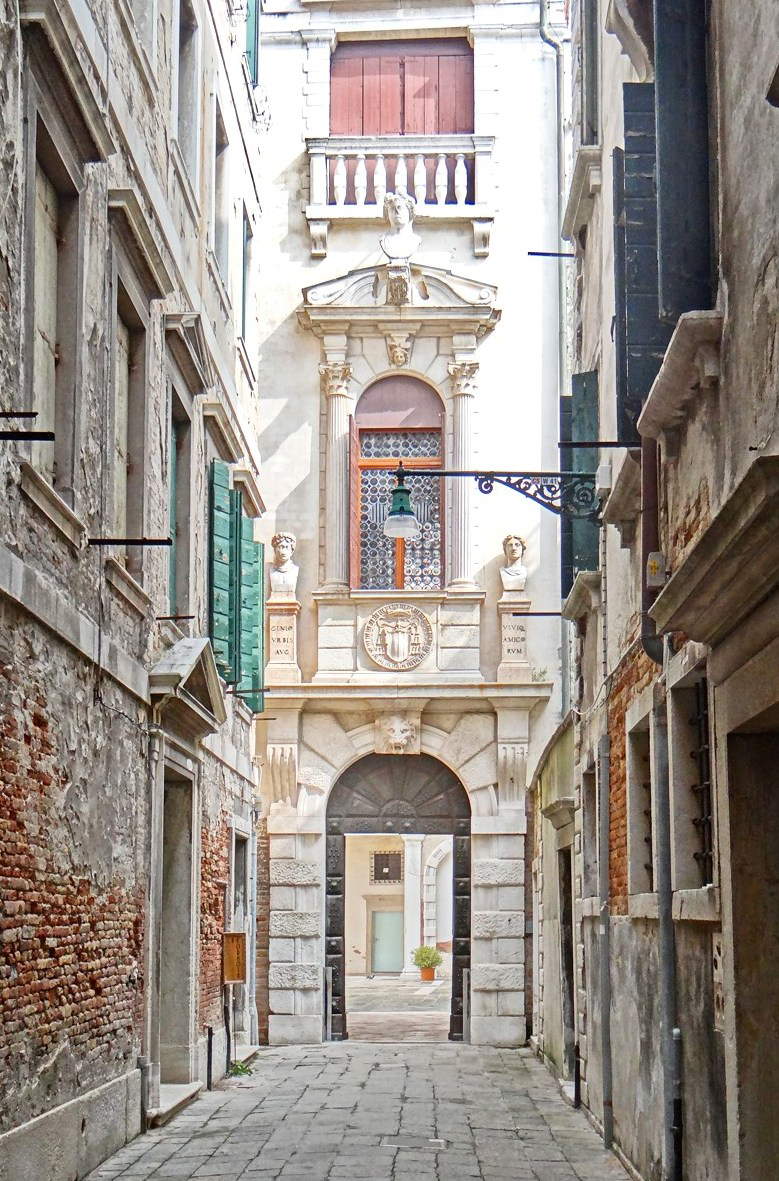


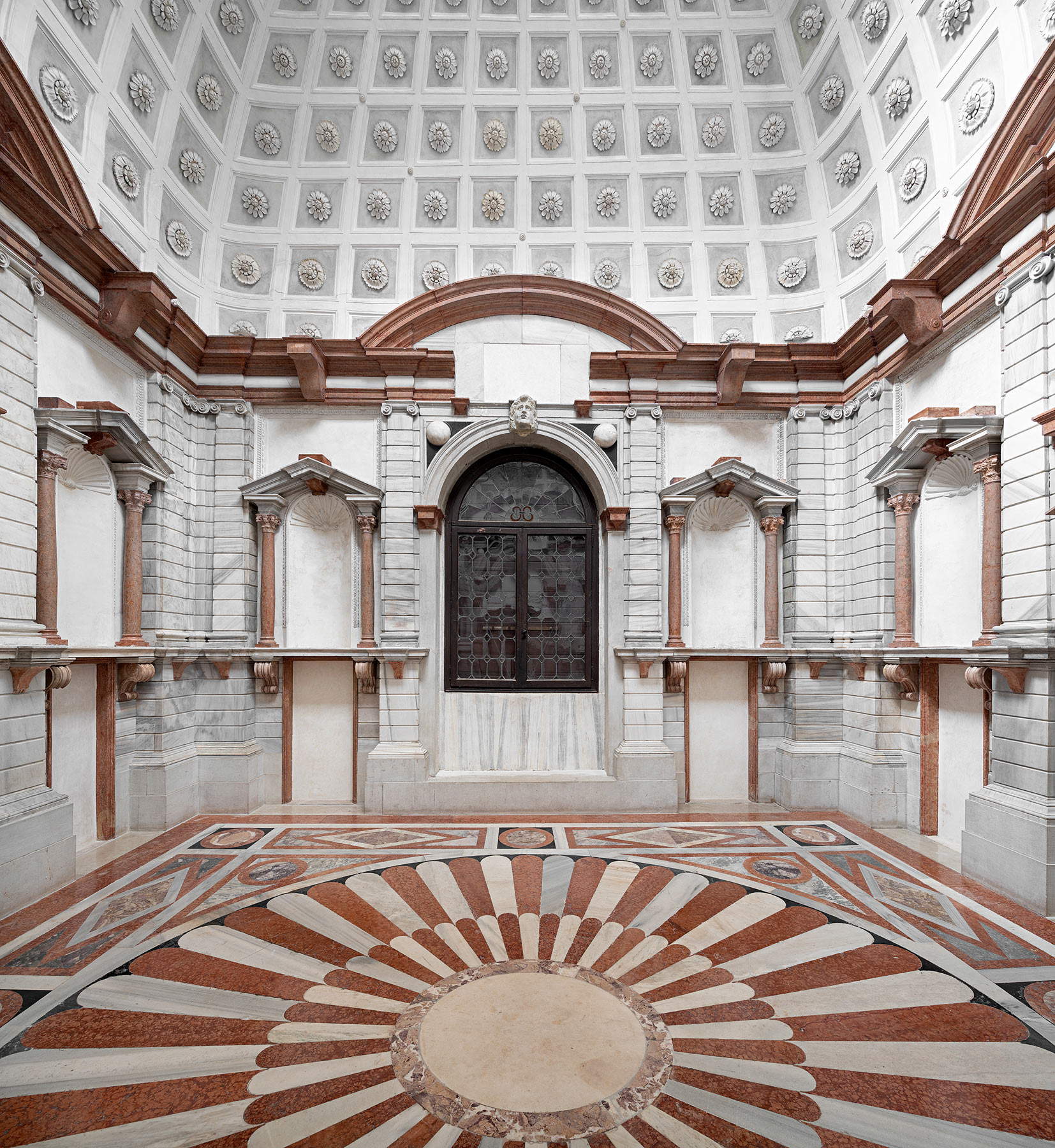
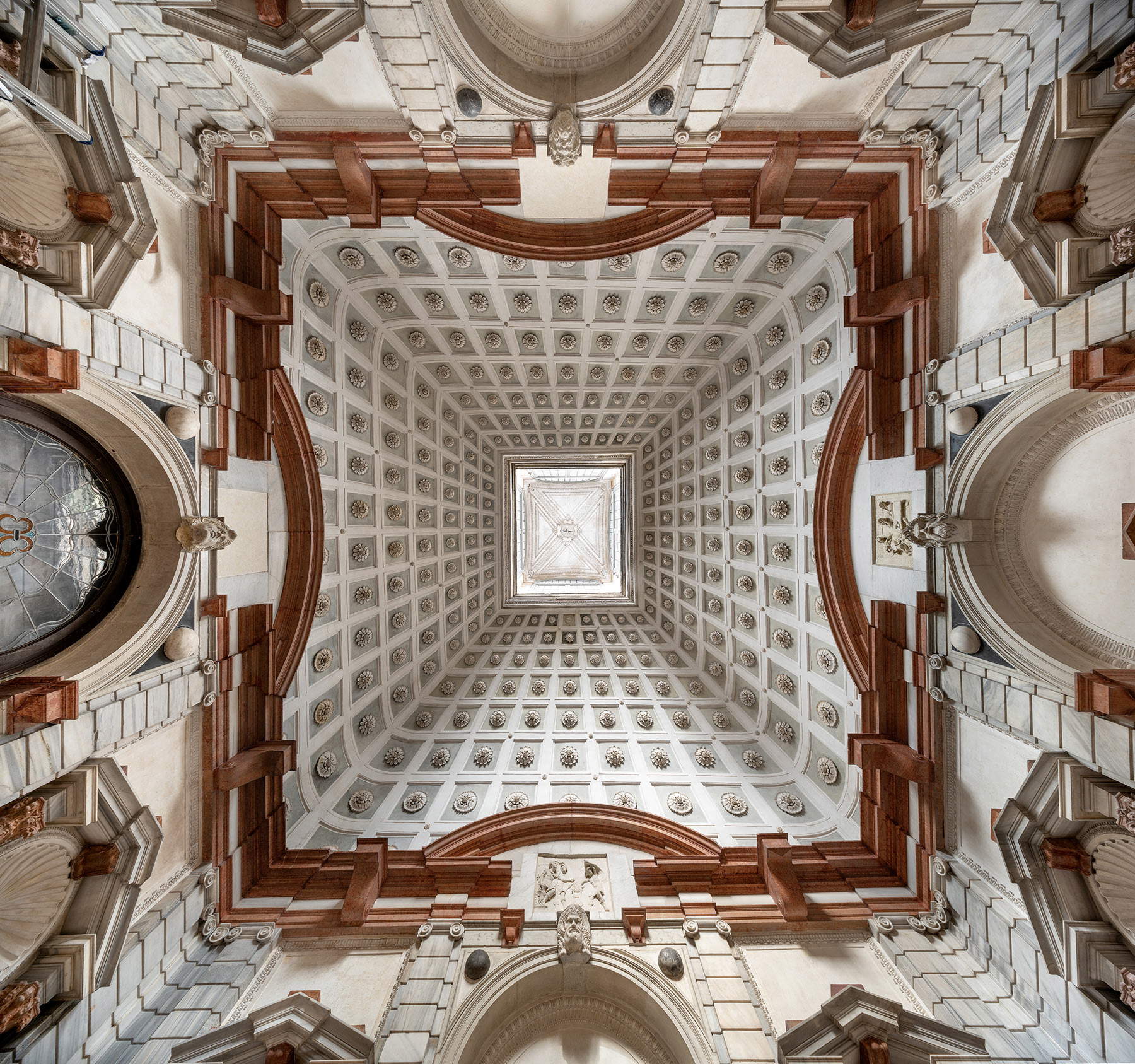
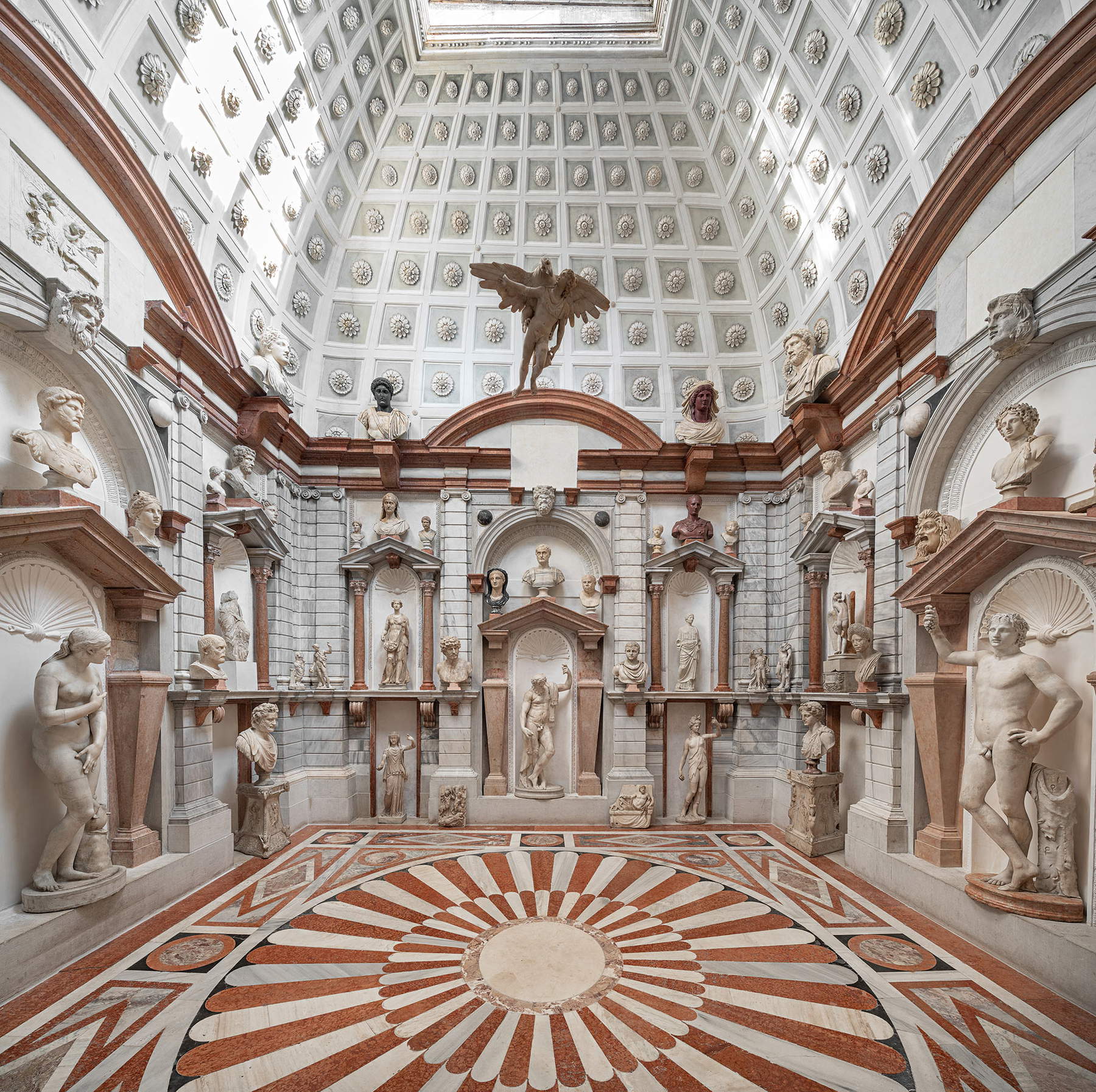
Giovanni Grimani’sAntiquarium was also surprising in its originality, since usually such classrooms were rectangular (so that they had the shape of a gallery), while the patriarch had a square one built: a true Kunstkammer “at the center of which to position himself,” wrote scholar Silvia Cattiodoro, “a shrine and casket for display and protection, specially built for the scholar and his treasure,” and where the patriarch could place himself, “with a certain vanity, as a champion of the anthropocentric vision then being debated in philosophical circles, in stark contrast to the modesty, at least in facade, required by his ecclesiastical role.” Giovanni Grimani’s dressing room became the pride of his residence: guests on official visits were willingly led there, and thanks in part to the patriarch’s Kunstkammer, Venice’s reputation as a city where Roman antiquities could be admired began to spread rapidly. “The Sala della Tribuna,” write Daniele Ferrara and Toto Bergamo Rossi in the Domus Grimani catalog, “was and still is the most unique room in the entire residence. Its walls, designed to display the Grimani family’s extraordinary collection of antiquities, are punctuated by pillars, architectural elements and niches within which large statues were displayed. The palace was a cultural destination frequented by scholars, men of letters, artists, sovereigns and prominent figures visiting Venice. The Grimani’s private patrimony gave prestige to the Republic, and the family members were aware of the public function their darte collection performed.” To welcome visitors, moreover, there was a dedication (still visible today) on the entrance portal, which read, “Genio Urbis Augustae / Usuique Amicorum,” an inscription that thus declared the palace open to the city and friends.
To design his Tribuna, Giovanni Grimani had been inspired by Roman collections (in Rome many nobles had set up collections of antiquities within spaces that recalled classicism): however, scholar Irene Favaretto has written, the nobleman “managed to create something unique, Roman in terms of the symmetrical scansion of the parts, but softened by a taste for color and theater that was all Venetian. It is the color of the marbles that gives a special atmosphere to the environment, making it come alive with skillful touches of red marble in the columns of the niches and on the cornices that delimit the flight of the lantern, with small elements of green marble that stand out on slabs of candid marble, while the rest of the wall is shaded in a warm shade of gray marble.” Colors, gray, red and green, which are moreover the predominant ones in St. Mark’s Basilica.
In the large niches of the lower register, Grimani had full-size statues arranged: in the arrangement recorded by Pellegrini and Massa, and recreated on the occasion of Domus Grimani, there is a Dionysus assembled in the 16th century with fragments from various eras and fragments created ex novo as was the custom at the time, a Silenus with a torso from the 3rd century B.C.C. and other parts integrated probably by Titian Aspetti (Padua, 1559 - Pisa, 1606), and a Capitoline-type Aphrodite from the second half of the second century A.D, also probably restored by Titian Aspetti in the 16th century. Above, Grimani had arranged a theory of portraits that had been placed over the shelves and above the frames to create, Favaretto writes, “a play of intersecting gazes between the sculptures, sometimes turning the moon toward each other, almost in conversation, in other cases looking disdainfully ahead.” The Tribuna reached the height of its splendor between 1560 and 1570, a period in which moreover Giovanni Grimani had to defend himself against accusations from those who suspected that he was supporting the Lutheran Reformation, and it was probably during this period that the environment must have reached its final arrangement, culminating at the top with the spectacular flight of the second-century A.D. Ganymede, restored in the sixteenth century, which was suspended in midair, invested by the light coming from the skylight. However, noted scholar Marcella De Paoli, it should also be emphasized that the display was to be “a constantly evolving project, remodeling in order to include new acquisitions.” At the time when Pellegrini and Massa compiled the inventory, more than one hundred and thirty works, in bronze and marble, were listed in the Tribuna (with Domus Grimani, on the other hand, eighty-seven were arranged). “Linsieme,” De Paoli pointed out, "was inspired by a general principle of harmony, of Renaissance sensibility, which in the placement of the statues within niches and in the zenithal light has suggested to some scholars comparisons with the Pantheon and with the Michelangelo of the Medici Chapels. A Kunstkammer then, which in Venice was ahead of its time and exalted the sacredness of ancient sculpture."
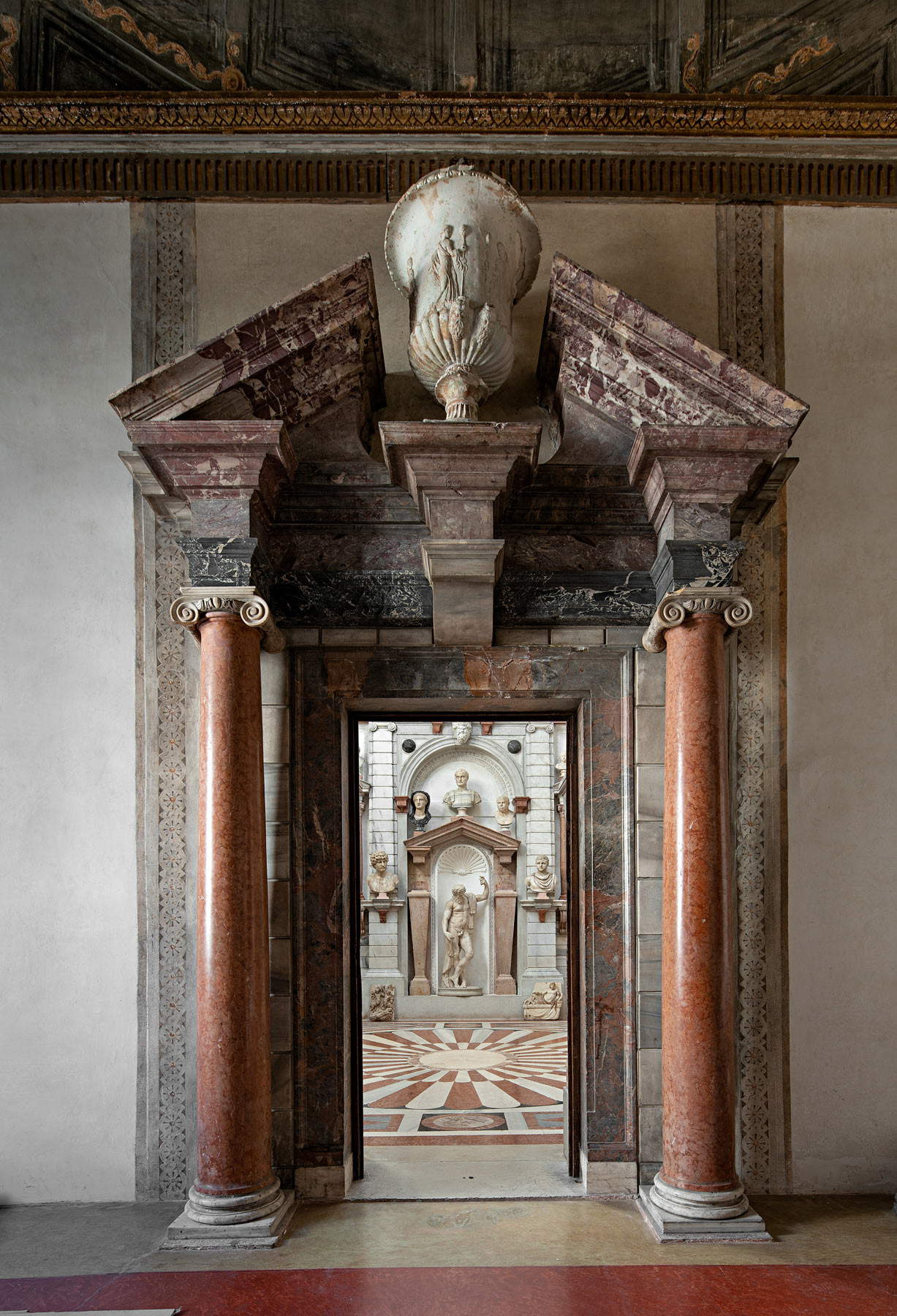




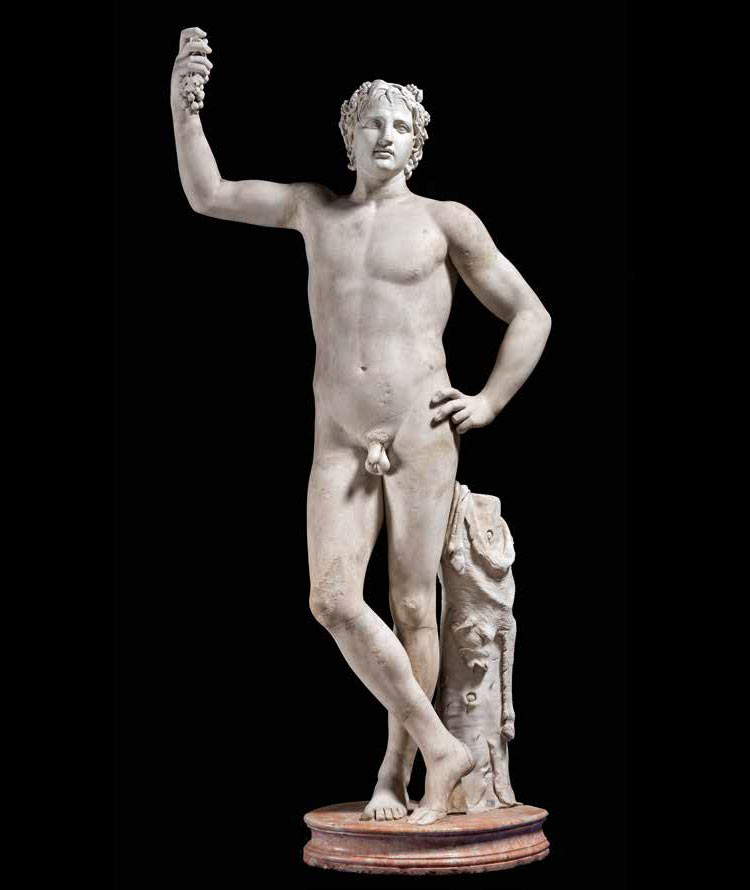

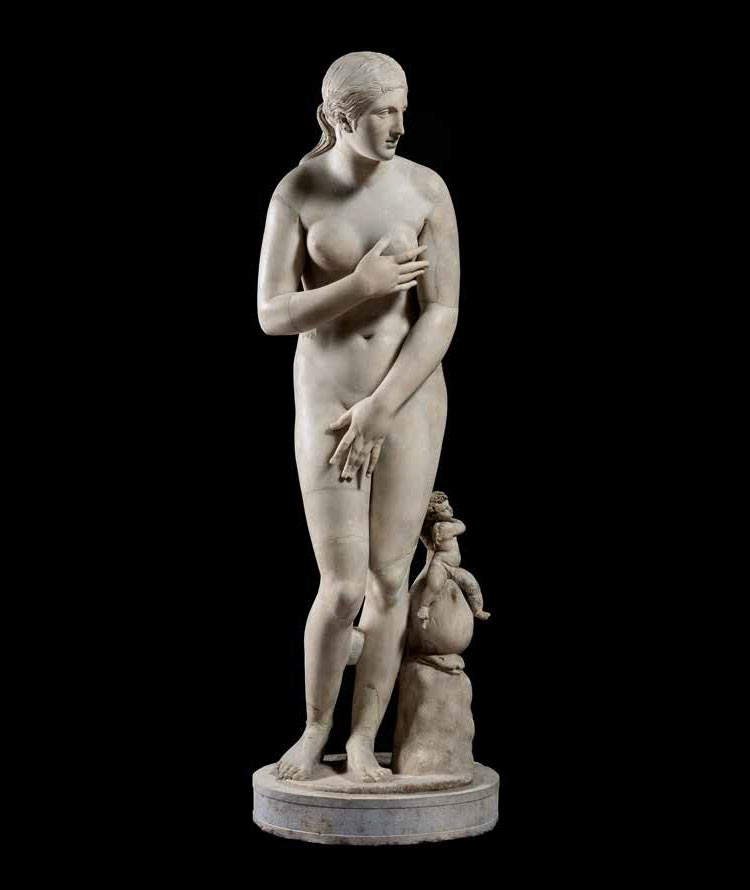

Following the Tribuna in order of spectacularity is the aforementioned Doge’s Hall, so called because it was designed by Giovanni Grimani for the specific purpose of celebrating Antonio Grimani, who had been the family’s first doge. The place dedicated to the memory of his grandfather was meant to commemorate the figure who had initiated the family’s fortunes: a story of success, downfall, and redemption (Antonio Grimani had been entrusted in 1499 with the command of the Venetian fleet against the Turks, who inflicted two heavy defeats on the Serenissima, with the result that the future doge was brought back to Venice in chains and then confined to the island of Cres: he would, however, receive a pardon in 1509 and then quickly made a comeback, eventually being elected doge in 1521, at the age of eighty-two). His nephew had envisioned a large room receiving light from three large windows overlooking the San Severo canal and interspersed with niches where sculptures were to be placed. All decorated with refined garlands of flowers and grotesques. In the center of the room, on the side adjoining the one where the windows are located, opens a fireplace on which stood the bust of Antonio Grimani (now lost: in its place for Domus Grimani was installed a bust of Caesar executed by the Tuscan sculptor Simone Bianco in the first half of the 16th century), and where the dedication (“Ant Grimano venet / Principi Optimo / Grim Familiae / Ampliatori”) can still be read today. Additional ancient sculptures were placed in the niches of the upper register, which are located above the doors.
After the demise of Giovanni Grimani, the fate of the works in the Doge’s Hall was not similar to that of the sculptures in the Tribuna, which in the vast majority shared the same fate, ending up, as will be discussed in a moment, in the Public Statuary of the Republic of Venice. The Doge’s Hall in fact underwent several transformations. The side opposite that of the fireplace had been covered with a light ashlar and in the center presented a large niche with “doi statues one larger than live of a faun embracing a satyr of live size,” Pellegrini and Massa recorded: this is the group with Dionysus and Satyr from the second half of the second century AD, supplemented and restored in the sixteenth century, and reinstated with the Domus Grimani arrangement. This side of the Hall housed the highest number of sculptures in the entire room, many of which, however, remained among the Grimani’s possessions, and the location of them is unknown today (among them is the aforementioned bust of Antonio Grimani), since in 1865 the heirs put several objects that were in the Palace up for sale, making the Doge’s Room empty. Despite the impossibility of reconstructing it exactly as it was, the Doge’s Room is nevertheless a fascinatingly charged environment: “if the reconstruction of the Tribuna was a happy intuition that allowed us to rediscover one of the most admired places in the sixteenth century for the beauty of its sculptures and the historical and artistic value of its components,” Irene Favaretto concludes, “the reconstruction of the Doge’s Room will give us back a human story that saw the redemption of a man from a painful personal event, projected against the backdrop of one of the most difficult periods in the history of the Serenissima.”
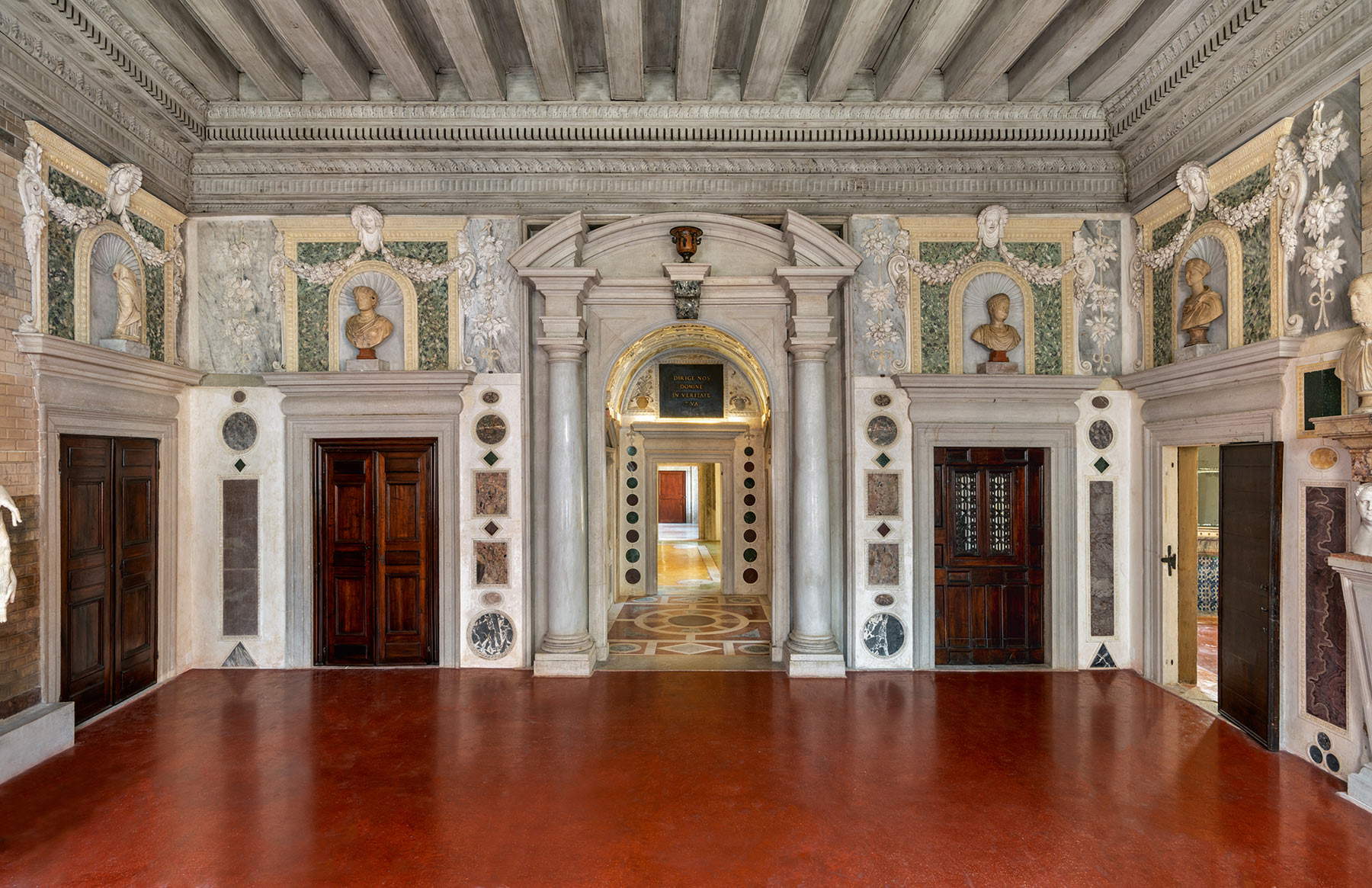
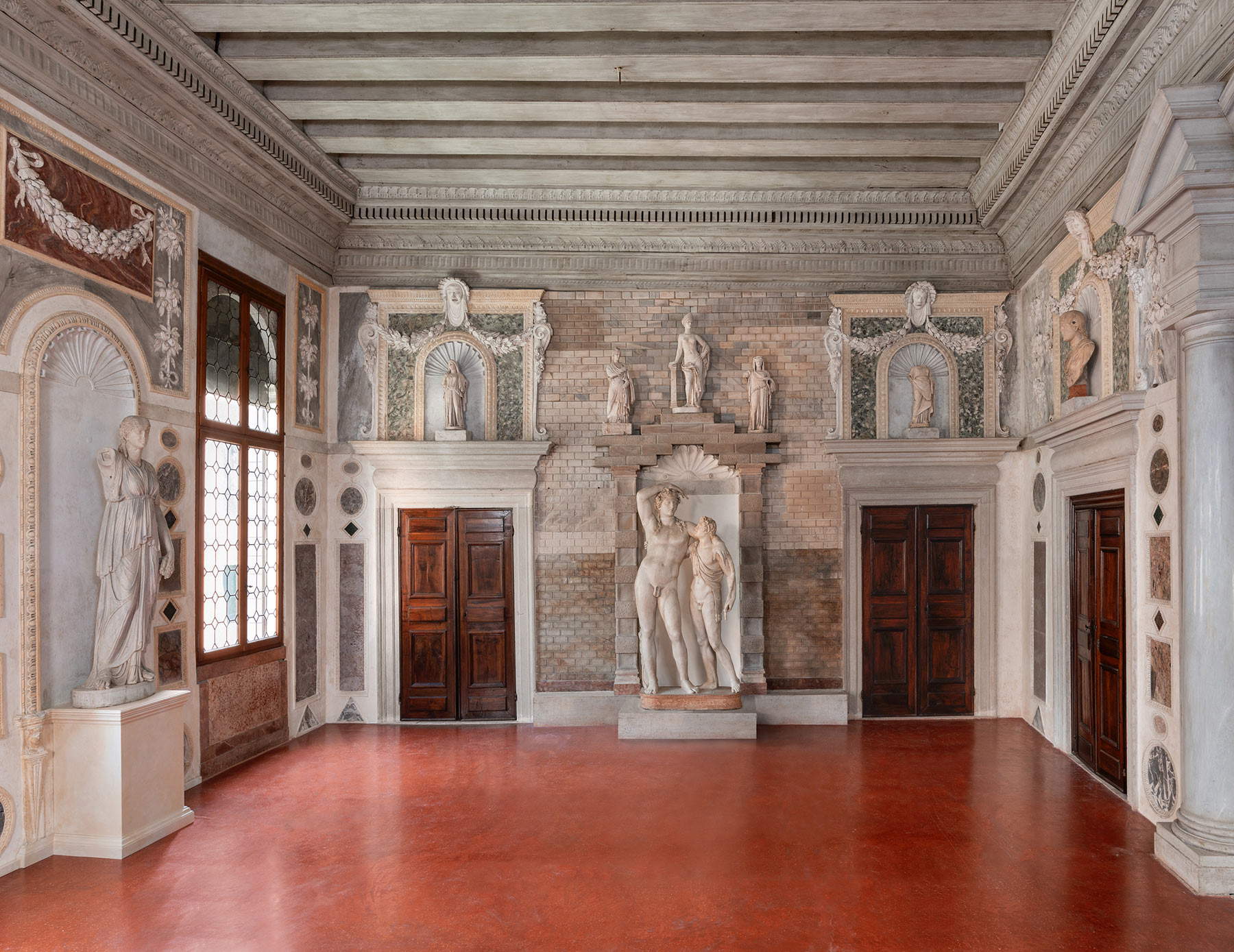
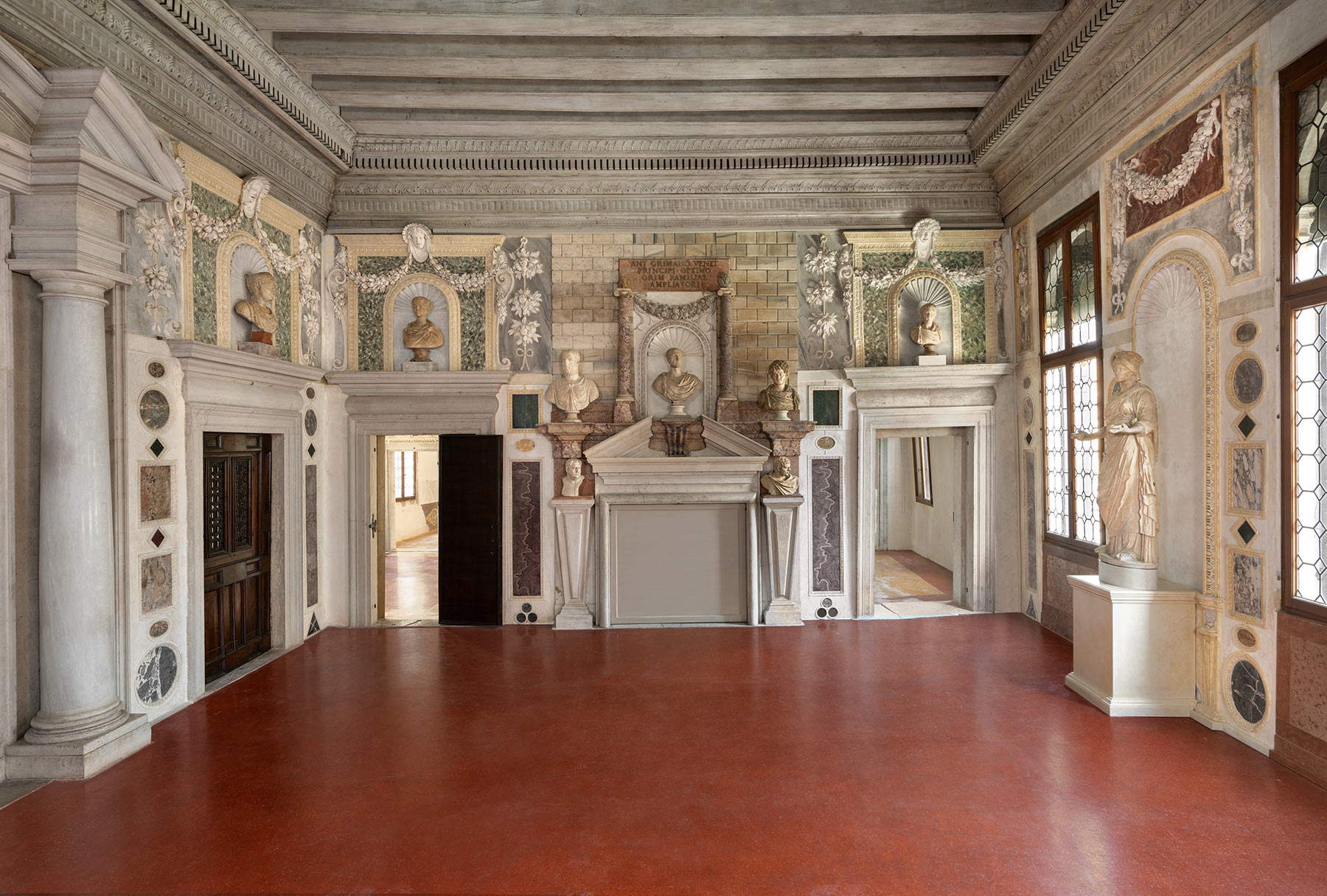
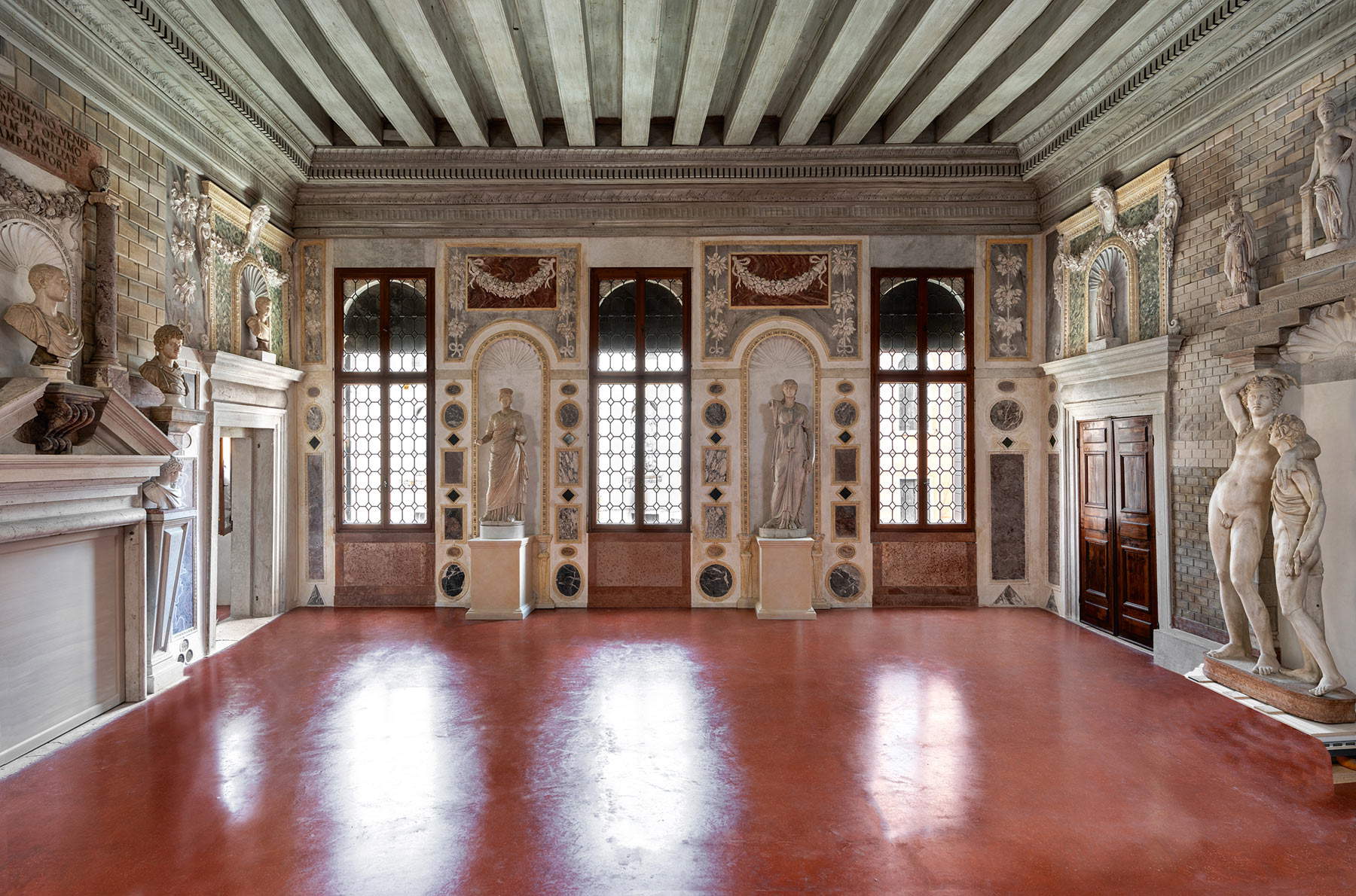
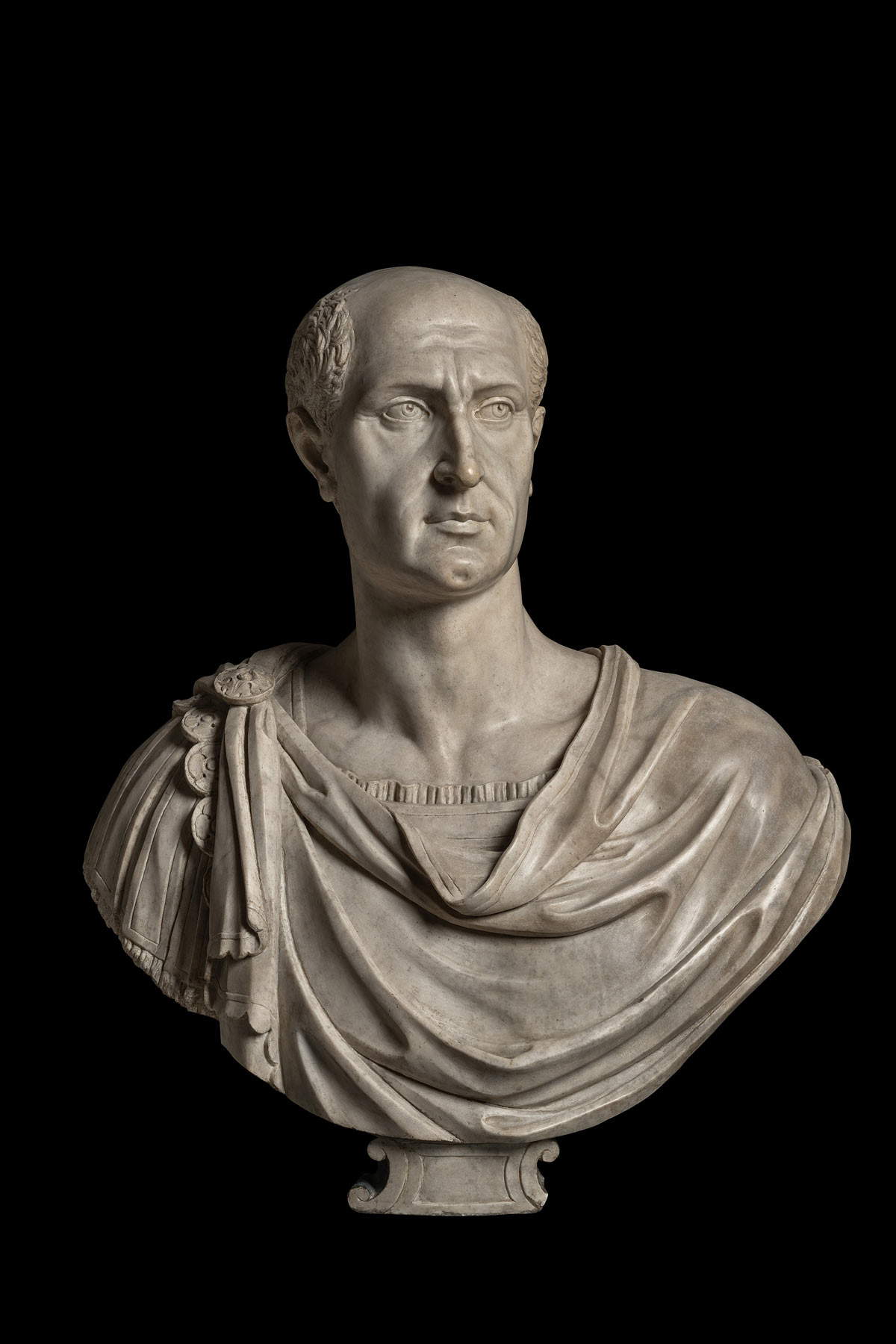
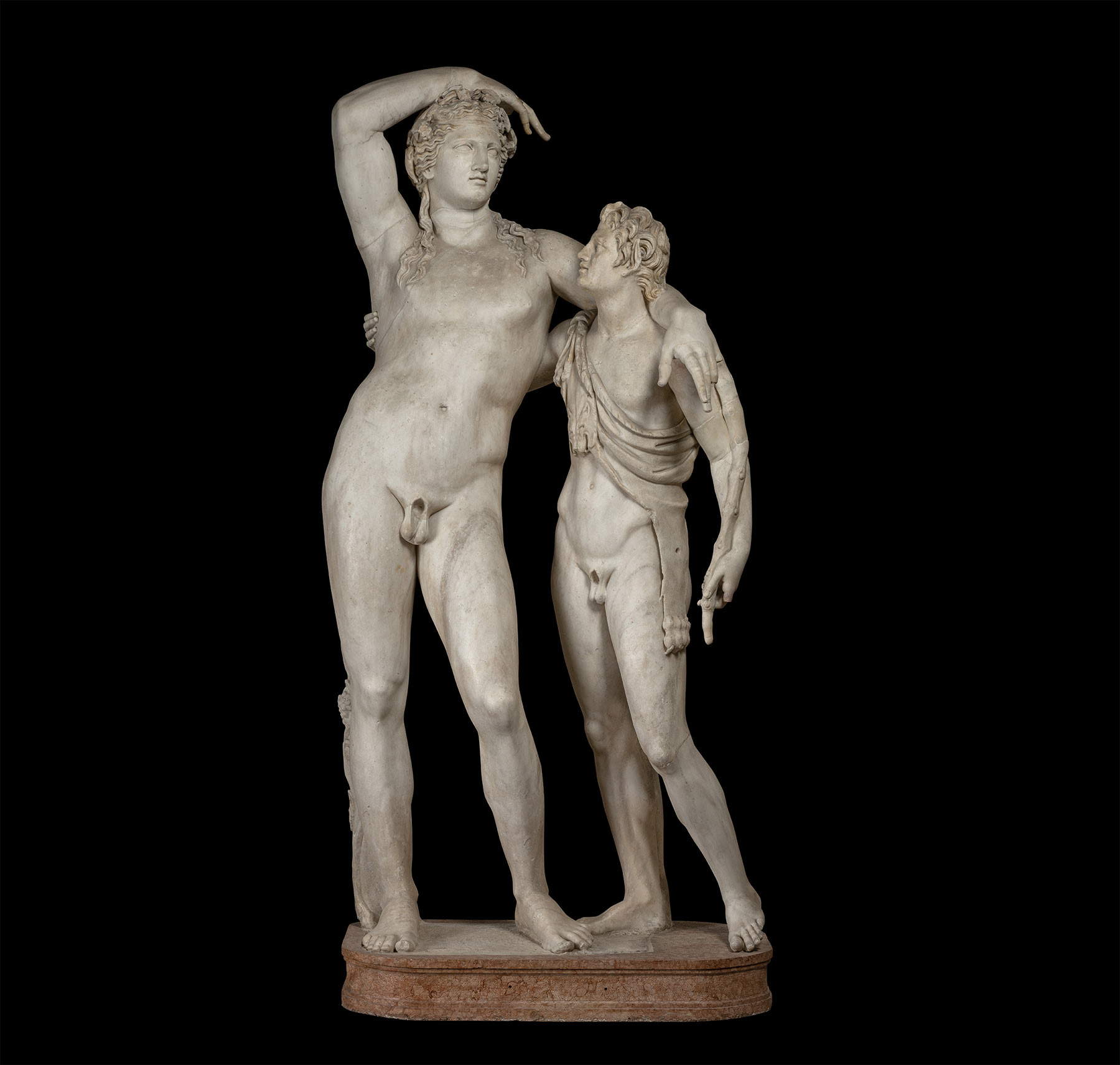
Giovanni Grimani’s formidable collection was donated to the Republic of Venice in 1587: the marbles remained in Palazzo Grimani for very little time, as soon after his death in 1593 the sculptures were transferred to the Biblioteca Marciana, in a room (the antisala of the Library) later destined to become the Statuario della Repubblica, which was opened to the public in 1596 and would later be further enriched by donations of works by other families. After the fall of the Serenissima in 1797, the Statuary was not spared from the Napoleonic spoliations: the sculptures left the Marciana for the Doge’s Palace, and some took the road to France (among them the relief with suovetaurilia once in the Grimani collection: an important bas-relief from the early imperial age depicting a sacrifice scene, the name of which indicates the beasts about to be immolated, namely a pig, a sheep and an ox). Following the Restoration, Austria, which had obtained sovereignty over the territories once belonging to the Venetian Republic, sent the director of the Belvedere Gallery in Vienna, Joseph Rosa, to Paris, who was tasked with recovering the goods stolen by the French in the areas that after 1815 had been united into a new state entity, the Lombardy-Venetia Kingdom. Most of the works in the Marciana returned to Venice, although some remained in France (among them the suovetaurilia, which had been walled up in a wall of the Louvre).
Most of the works therefore returned to their proper place. After the Unification of Italy, in 1882, the state divided the museum’s holdings from those of the library, an act that would lead to the creation, between 1923 and 1926, of the Archaeological Museum of Venice, based in the Procuratie Nuove (where it is still located today). It is here that Giovanni Grimani’s collection is preserved. A collection that, as mentioned, in May 2019 was temporarily transferred to the Tribuna of Palazzo Grimani, thus going to rearrange the environment as it could be seen until 1594, the year in which the marbles left the building to be displayed at the Marciana. Palazzo Grimani is in fact a relatively recent acquisition for the public: the building was in fact purchased by the Ministry of Culture in 1981, and after years of restoration it became a state public museum in 2008 (since 2015 it has been one of the museums of the Veneto Regional Museums Directorate, the former Polo Museale del Veneto). For Venice, Ferrara and Bergamo Rossi explained, the palace represents “a precious rarity, because of its architectural conformation, which recalls the Roman domus and the Renaissance models of the papal city, as well as because of its Tuscan-Roman mannerist decorations: the frescos and stuccoes by Giovanni da Udine, a pupil of Raphael, with whom he collaborated on the decoration of the Vatican Loggias and the Farnesina in Rome, and by other artists who made a name for themselves through Roman experiences, the Florentine Francesco Salviati and the Marche-born Federico Zuccari.”
Thus, the rearrangement of the sixteenth-century rooms represented an “exceptional event,” as Ferrara and Bergamo Rossi called it, that “made it possible to admire Greek and Roman sculptures for the first time after four centuries in the location desired by Patriarch Grimani, and to enhance a state museum venue that is still too little known. The Grimani’s collections of ancient art represent today, as in the 16th century, an international unicum.” Palazzo Grimani is thus a particularly lively museum, whose holdings continue to be enriched, as evidenced by the acquisition in 2020 of the portrait of Giovanni Grimani attributed to Domenico Tintoretto, which filled an important iconographic gap since the museum lacked a portrait of the “paron de casa.” And it has already become one of the places in Venice that most fascinate citizens and travelers.
Warning: the translation into English of the original Italian article was created using automatic tools. We undertake to review all articles, but we do not guarantee the total absence of inaccuracies in the translation due to the program. You can find the original by clicking on the ITA button. If you find any mistake,please contact us.